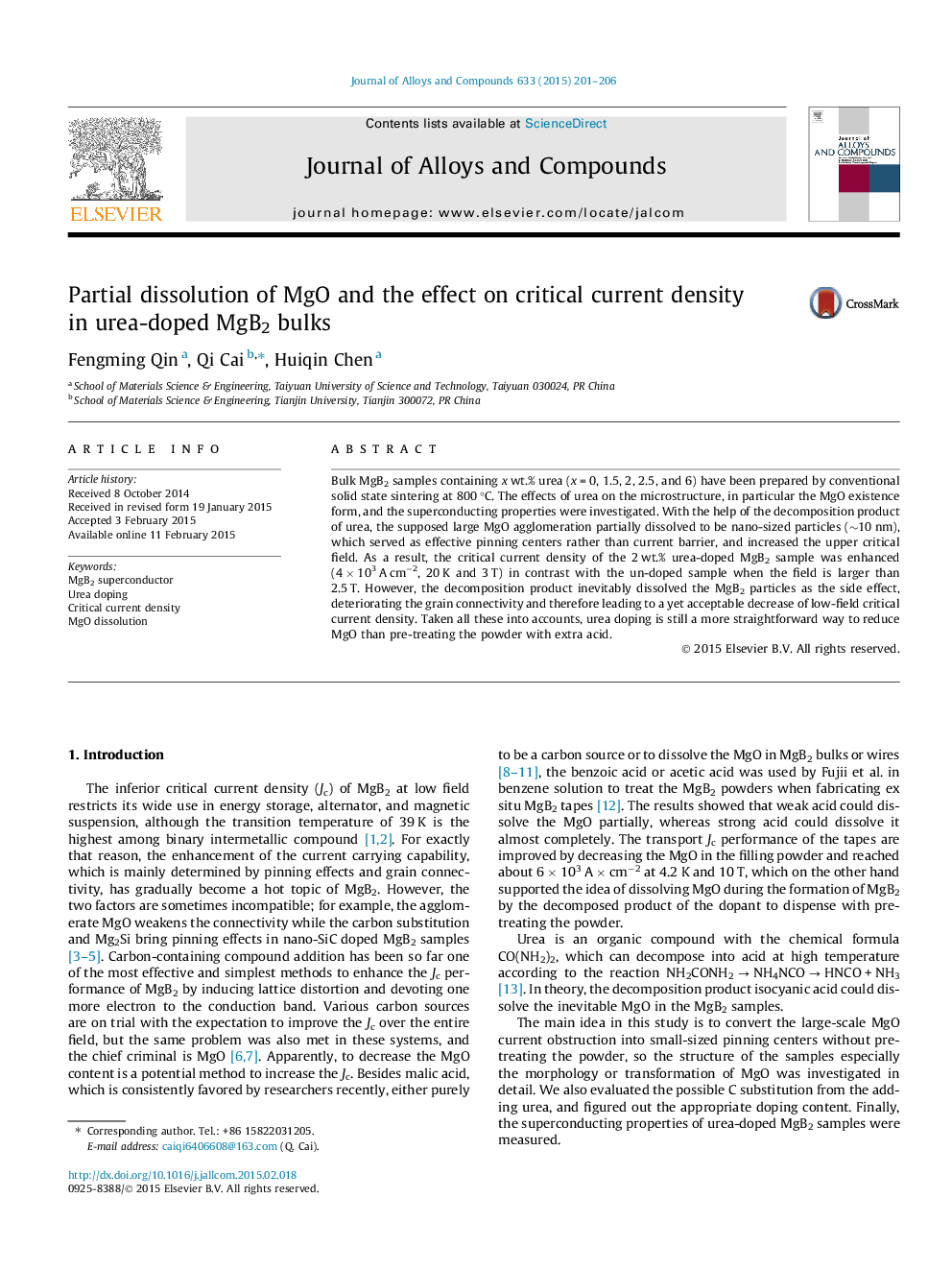| Article ID | Journal | Published Year | Pages | File Type |
|---|---|---|---|---|
| 1609325 | Journal of Alloys and Compounds | 2015 | 6 Pages |
Abstract
Bulk MgB2 samples containing x wt.% urea (x = 0, 1.5, 2, 2.5, and 6) have been prepared by conventional solid state sintering at 800 °C. The effects of urea on the microstructure, in particular the MgO existence form, and the superconducting properties were investigated. With the help of the decomposition product of urea, the supposed large MgO agglomeration partially dissolved to be nano-sized particles (â¼10 nm), which served as effective pinning centers rather than current barrier, and increased the upper critical field. As a result, the critical current density of the 2 wt.% urea-doped MgB2 sample was enhanced (4 Ã 103 A cmâ2, 20 K and 3 T) in contrast with the un-doped sample when the field is larger than 2.5 T. However, the decomposition product inevitably dissolved the MgB2 particles as the side effect, deteriorating the grain connectivity and therefore leading to a yet acceptable decrease of low-field critical current density. Taken all these into accounts, urea doping is still a more straightforward way to reduce MgO than pre-treating the powder with extra acid.
Related Topics
Physical Sciences and Engineering
Materials Science
Metals and Alloys
Authors
Fengming Qin, Qi Cai, Huiqin Chen,
